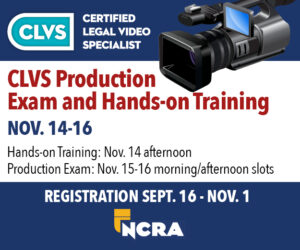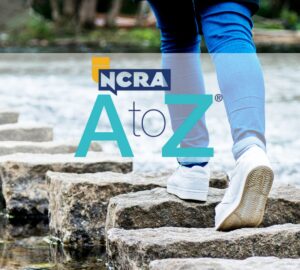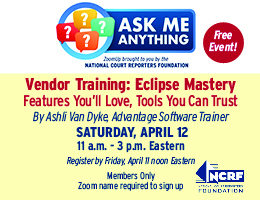Congratulations! You’ve become credentialed as a Realtime Systems Administrator. That certificate looks great on your wall, and you’ve built up substantial upper body strength carrying around the Realtime Systems Administrator Manual. So now what? Can you leap tall buildings in a single bound? Nope. Can you outrun a speeding a bullet? Nope. Although, come to think of it, you can give that gunsmith a run for his money on the record — both barrels, even — being the topnotch caliber reporter that you are.
Besides being a great credential to have, the RSA credential gives you the confidence and base of knowledge to work from in providing everyday realtime services. Yes, some hookups will still be challenging, but with the quick reference guide and Realtime Systems Administrator Manual to draw on, you should be able to overcome almost all obstacles. There’s still no cure for lack of a serial port, which is an all-too-common problem in this day and age, but carrying a spare USB adapter with you and keeping a list of law firm IT department phone numbers and contacts will let you conquer even that.
With your credentials, you’re now capable of being the go-to person in your firm or courthouse. There’s nothing more rewarding than being able to confidently troubleshoot someone else’s computers to get things working, spreading the use of realtime, and securing everyone’s future. Hop on the TRAIN and don’t look back.
The reality is that in lots of courthouses, both state and federal, serial connections are the only permitted method of providing realtime to the judge or counsel. Even steno machines must be connected via serial or USB cable to the reporter’s computer. Things are slowly changing with the popularity of the iPad, but security is the overwhelming theme in those venues, and any wireless signal is a potential liability, and the state and federal courts are sometimes very proprietary about their data, court proceedings included. They will sometimes permit infrared connections, since those only function within the room. It seems like there’s always something.
But the Realtime Systems Administrator program doesn’t stop with just serial connections. You’ve got the base of knowledge and experience for serial connections, and now it’s time to expand your knowledge and experience into the realm of wireless, LAN, and WAN connections. Once you understand the types of things that can inhibit serial connections, you have a better understanding of how to troubleshoot, and that skill transfers into the wireless world.
Everywhere you look, you see wireless, wi-fi, you name it — the world is losing wires and heading into the ether. Is it easier? Maybe. Is it better? Maybe. Is it faster? Probably not, unless you’re in Japan or a country where wireless is king and you have a compatible phone or data device. Wireless connections are usually half the speed of wired. In the interactive realtime and streaming market, wireless can still give you dropped connections and dropped data. It’s a fact of life until the technology and software catches up with the needs of the consumer. If you want stable and reliable connections, you still need wires, whether it’s direct to the client or a direct connection to the Internet. And if a courthouse or law firm has a wireless inhibitor installed, your router and wireless viewers aren’t going to function.
One exception is StenoCast wireless, which you should also make yourself familiar with, since it’s a great option to go wireless and still serve serial connection client software. It also has a “TV” viewer that a witness or interpreter can use for viewing, or that a client can use for CART purposes. If you feel daring and all techie, you can even use Bluetooth from Blue Soleil to create your own Bluetooth serial network.
These are all interesting directions, and they’ll give you options for providing services to your clients that may never have occurred to either you or them.
Internet/intranet streaming is also a newer method of providing realtime services, either locally with an intranet or worldwide using the Internet. They have their own pitfalls and idiosyncrasies, but with the troubleshooting skills you’ve been shown and the voluminous reference material available via the Realtime Systems Administrator Manual, you’ll be well-equipped when you delve into the next new technological challenge. The quick reference guide is a handy on-the-go reference tool with the most likely fixes for all types of connection problems. And the really great thing about both the quick reference guide and the Realtime Systems Administrator Manual is that they’re being updated constantly with new information, and that information is available through the SharePoint site sponsored by NCRA. You can download the information in PDF format for use on your computer or tablet, keeping it with you when you’re in the field making things work.
So, what comes after passing the Realtime Systems Administrator test? Lots and lots of opportunities to help others establish reliable connections, greater confidence in your own abilities to make things work with your clients, and the ability to deal with the inevitable escalation of technology that keeps all of us on the bleeding edge. There’s nothing that gets your heart pumping like having a great client walk in with a new notebook and say, “Here, make this work. I just got it.” And there’s nothing more satisfying than opening up your realtime kit, pulling out the necessary adapters, USB devices, software, etc., and getting him or her up and running in record time. Does it happen overnight? No. But you didn’t learn to write steno or use your CAT system in only 20 minutes or 20 hours. Everything builds on the preceding experiences, and with the workshop, you get the benefit of more than 100 years of realtime experience that the committee members have and are more than willing to share with you.
If you haven’t already taken the RSA course and the practical exam, be sure to register as soon as you get the announcement, especially if you’re planning on coming to NCRA’s TechCon in Arizona this April to take the practical exam. We have limited testing slots, so register early to ensure you can attend the workshop and take the practical test.















